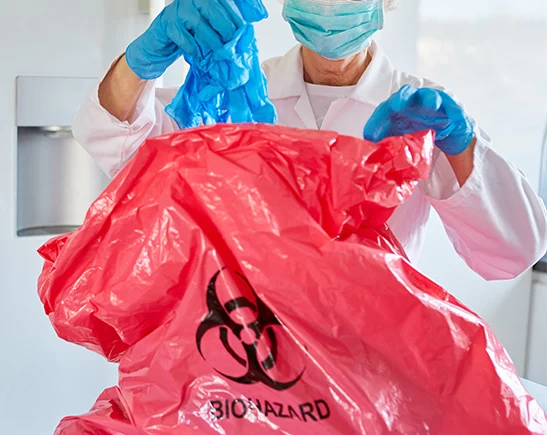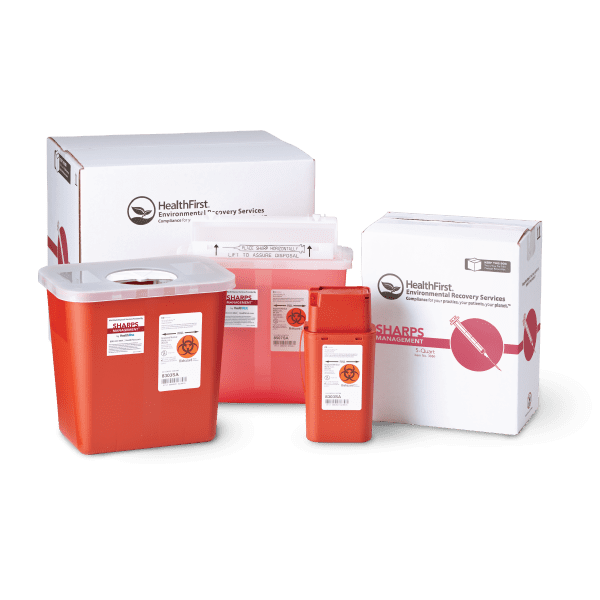Safe and Secure: The Conclusive Option for Professional Medical Waste Removal Provider
Safe and Secure: The Conclusive Option for Professional Medical Waste Removal Provider
Blog Article
Discovering Different Waste Disposal Options for a Cleaner Environment
In the pursuit of a cleaner environment, the administration of waste disposal has emerged as an important prime focus for sustainable growth. With a plethora of waste disposal options offered, varying from typical land fill techniques to ingenious waste-to-energy innovations, the selection of just how we manage our waste has significant implications for our planet's wellness. By taking a look at the numerous approaches and strategies utilized in reusing, composting, incineration, landfill administration, and waste-to-energy processes, a much deeper understanding of their effects and effectiveness can be gained. The pursuit for optimal waste disposal approaches that prioritize environmental conservation while satisfying the requirements of a growing populace stays a pushing worry in today's world.
Recycling Methods
Applying effective reusing approaches is important in minimizing waste and advertising sustainability in our setting. Recycling involves the procedure of converting waste materials right into reusable items to avoid unneeded disposal. One of the most typical recycling methods is worldly recovery, where materials like paper, steel, glass, and plastic are accumulated, arranged, and processed to produce new items. This process not just preserves natural deposits yet also decreases power intake and greenhouse gas discharges related to producing new materials from square one.
One more essential recycling method is composting, which entails decomposing organic waste like food scraps and backyard trimmings right into nutrient-rich soil. By including these numerous reusing approaches into our waste management techniques, we can dramatically lower our ecological footprint and relocate towards a more sustainable future.

Composting Techniques
Effective waste management practices, such as reusing approaches, lead the way for a cleaner setting, and currently, shifting the focus to 'Composting Techniques', we check out sustainable means to break down organic waste for ecological advantage. medical waste disposal.
Composting is a natural procedure that changes natural waste, like food scraps and yard trimmings, into a nutrient-rich dirt amendment. The secret to effective composting depends on producing the right balance of environment-friendly products, such as fruit and veggie scraps, and brownish products, like dried fallen leaves and branches. These materials disintegrate with the help of microbes, breaking down the waste into useful garden compost.
There are different composting strategies readily available to suit various needs. Traditional backyard composting includes layering natural materials in a bin or pile and frequently turning the mix to aerate it. Vermicomposting, on the other hand, uses worms to damage down natural matter right into garden compost (click here). For those with limited space, indoor composting systems offer a practical option. By using composting methods, we can decrease the amount of waste sent to garbage dumps while developing a valuable item for improving dirt and sustaining plant growth.
Incineration Pros and Cons
Incineration, as a garbage disposal technique, presents both benefits and drawbacks that warrant careful consideration in the realm of sustainable waste monitoring methods. On the silver lining, incineration can significantly lower the volume of waste, lessening the requirement for landfill area and potentially lowering greenhouse gas discharges. Incineration additionally enables for the recuperation of power through the generation of power or warmth, adding to source healing. The process can be made use of to destroy harmful materials, using a secure method for dealing with particular types of waste that may pose dangers to public wellness and the setting if left without treatment.
However, there are significant drawbacks to incineration. One significant concern is the prospective release of harmful pollutants into the air, such as dioxins, heavy metals, and particulate matter, which can have negative results on human health and wellness and the setting. In addition, the high first financial investment and functional prices of incineration centers pose economic challenges, making it a less cost-effective choice contrasted to various other waste monitoring approaches. Mindful surveillance and guideline are necessary to alleviate these adverse influences and take full advantage of the advantages of incineration as part of an extensive waste administration method.
Land Fill Monitoring Approaches
Land fills play an essential role in waste management and ecological preservation by supplying a containment system for the disposal of solid waste materials. Reliable land fill management approaches are vital to reduce environmental impacts and ensure the long-term sustainability of these garbage disposal websites. One essential method is correct waste compaction to make best use of using offered space within the land fill (click here). By compacting the waste, the volume is reduced, enabling even more waste to be fit in time.
Furthermore, the execution of everyday cover practices is essential in minimizing odors, protecting against trash, and decreasing the attraction of bugs. Covering the disposed waste at the end of every go to this website day assists to have odors and protect against prospective environmental contamination. In addition, the tracking of land fill gas discharges and leachate levels is critical in making sure that ecological criteria are met which any type of possible risks to bordering environments are reduced.

Waste-to-Energy Technologies
Among the innovative approaches to waste management involves harnessing Waste-to-Energy modern technologies to convert solid waste into usable power sources. Waste-to-Energy (WtE) modern technologies incorporate a series of procedures that intend to draw out energy from waste materials through thermal, chemical, or organic means. This conversion process not only minimizes the quantity of waste that ends up in landfills but also produces beneficial power resources such as electricity, heat, or biofuels.
There are several approaches of Waste-to-Energy conversion, consisting of incineration, gasification, and pyrolysis. Incineration entails shedding waste at high temperature levels to produce heat and electricity. Gasification transforms waste into a syngas, which can be made use of for power generation or chemical production. Pyrolysis breaks down organic materials utilizing high temperature levels in the lack of oxygen, producing bio-oil, gas, and char.
Carrying out Waste-to-Energy technologies can assist mitigate environmental concerns related to conventional garbage disposal methods while all at once supplying a renewable resource resource. Nevertheless, mindful consideration needs to be offered to emissions control and making certain the sustainability of feedstock materials for these technologies to be really beneficial for a cleaner atmosphere.

Conclusion
Finally, discovering various waste disposal options such as reusing, composting, incineration, landfill monitoring, and waste-to-energy modern technologies is essential for promoting a cleaner environment - click here. Each method has its very own advantages and difficulties, however by making use of a mix of these methods, we can work towards minimizing the quantity of waste that winds up in land fills and ultimately add to a much more lasting future for generations to find
With a wide variety of waste disposal alternatives readily available, varying from traditional landfill methods to innovative waste-to-energy technologies, the selection of just how we manage our waste has far-reaching implications for our planet's health. medical waste removal service.Incineration, as a waste disposal method, presents both benefits and drawbacks that merit cautious factor to consider in the realm of sustainable waste monitoring techniques.Land fills play a critical duty in waste administration and environmental conservation by providing a containment system for the disposal of strong waste products. By compacting the waste, the volume is lowered, enabling for more waste to be accommodated over time
One of the innovative approaches to waste monitoring includes utilizing Waste-to-Energy technologies to transform strong waste into useful energy resources.
Report this page